Victorian traveller’s amazing picture of the Sphinx when it was still buried in sand sells as part of collection for a ‘gobsmacking’ £168,000
A Victorian travelogue containing photographs of an army officer and brilliant sketches of his world travels has sold for a whopping £168,000.
Mark Tanner explored India and Egypt after retiring in the 1850s, when the practice of photography was still in its infancy.
He took rare early photographs of landmarks including the pyramids and the Great Sphinx of Giza, which at the time was buried up to its neck in shifting sand.
The 1851 photo is only two years younger than its earliest recording. It wasn't until the 1880s that its chest and legs were uncovered after decades of attempts to dig it out.
A Victorian travelogue containing photographs of an army officer and brilliant sketches of his world travels has sold for a whopping £168,000. Above: An 1851 image of the Great Sphinx, when its chest and paws were still hidden by sand and rocks
The British officer took photographs of the Suez Canal shortly after it was built and a century before the Suez Crisis toppled British Prime Minister Anthony Eden.
His photographs also show Alexandria before the Royal Naval bombardment of the port city in the 1880s.
Other images document his travels in India and show temples, monuments and royalty.
Tanner was also a skilled draftsman and he painted watercolor pictures of Cairo and desert monuments, as well as Indian rural scenes and temples, among other places.
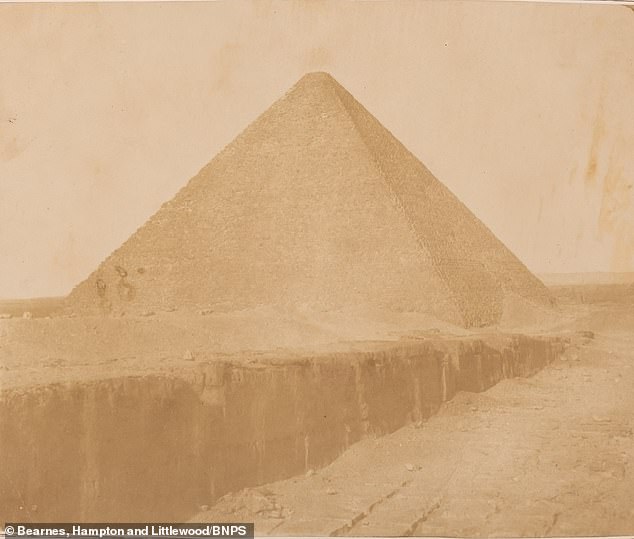
Tanner's shot of the Great Pyramid. His younger brother repaired the album after his death, and it has since been passed down through generations of the family
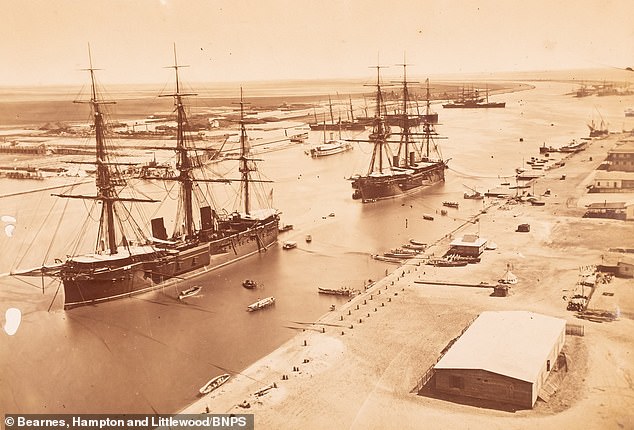
A stunning photo of the entrance to the Suez Canal was taken by Tanner in 1882. Nic Saintey, director of Bearnes, Hampton & Littlewood, said: 'The whole album is a snapshot of a time gone by when British colonialism was at its height'
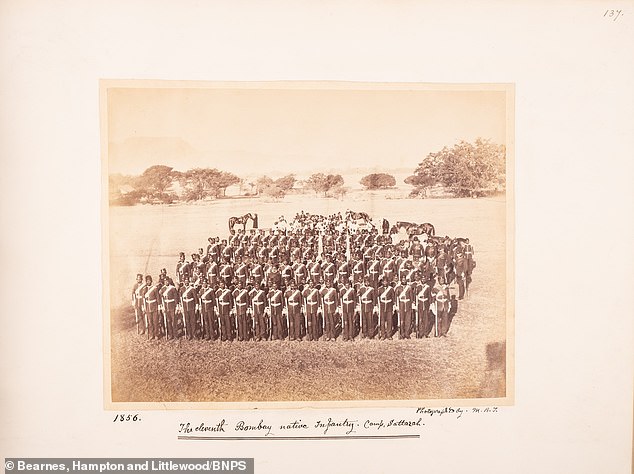
Tanner's 1856 photo of the 11th Regiment of Bombay Native Infantry, a unit of Indian troops serving the British Empire
He also wrote notes about his experiences.
There are also his portrait photographs and drawings of indigenous people and wild animals.
The album contains approximately 50 black and white photographs and 75 watercolor sketches.
Tanner died in 1897 and the album passed down generations of the family.
It has now been sold by Tanner's 90-year-old granddaughter at auction house Bearnes, Hampton & Littlewood, of Exeter, Devon.
The album was expected to fetch £12,000, but due to the rarity of the early photographs and the quality of the sketches, it sold for a hammer price of £135,000.
With additional costs, the total price paid by the anonymous Indian buyer was £168,000.
The saleswoman, who is 90, was “stunned” by the sale price and plans to use some of the money to pay for her care.
Nic Saintey, of Bearnes, Hampton & Littlewood, said: 'The 75 watercolors are as bright and vibrant as ever, as if they were painted yesterday.
'Tanner's topographical representations of India are so clear and accurate that the locations are likely to be recognizable today.
'The album is a travelogue of a British guy's journey through Europe to India and back.
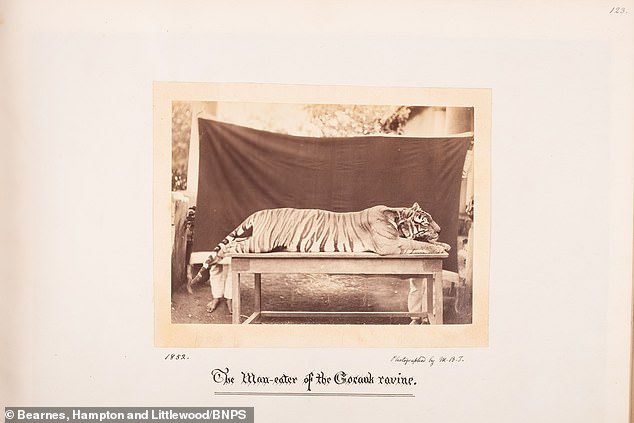
Tanner's 1852 photo of a tiger dubbed the “Man-Eater of Gorank Ravine.”
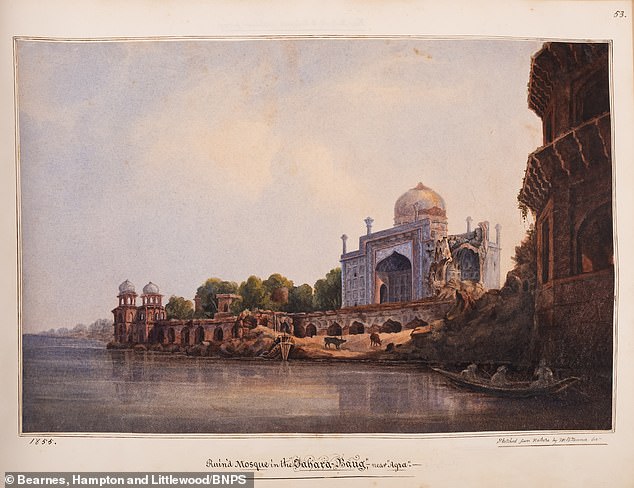
Tanner also made sketches of scenes in India and Egypt. Above: a sketch from 1855 entitled 'destroyed mosque in the Saraha-Baug near Agra'
'It's a snapshot of a bygone era, when British colonialism was at its height.
'It's also full of quirky anecdotes, including the author almost being eaten by a tiger.
'There are studies of Indian gods, wildlife and much more, making it almost documentary material of an individual's life during that period.
“There are many Indian collectors who are interested in buying back this kind of heritage and this album has gone to an Indian buyer.
'His photographs are also among the earliest photographs of famous landmarks in both India and Egypt.
'Our supplier was astonished when we told her the result.
“She is 90 years old, has no children and sold them to pay her medical bills.”
